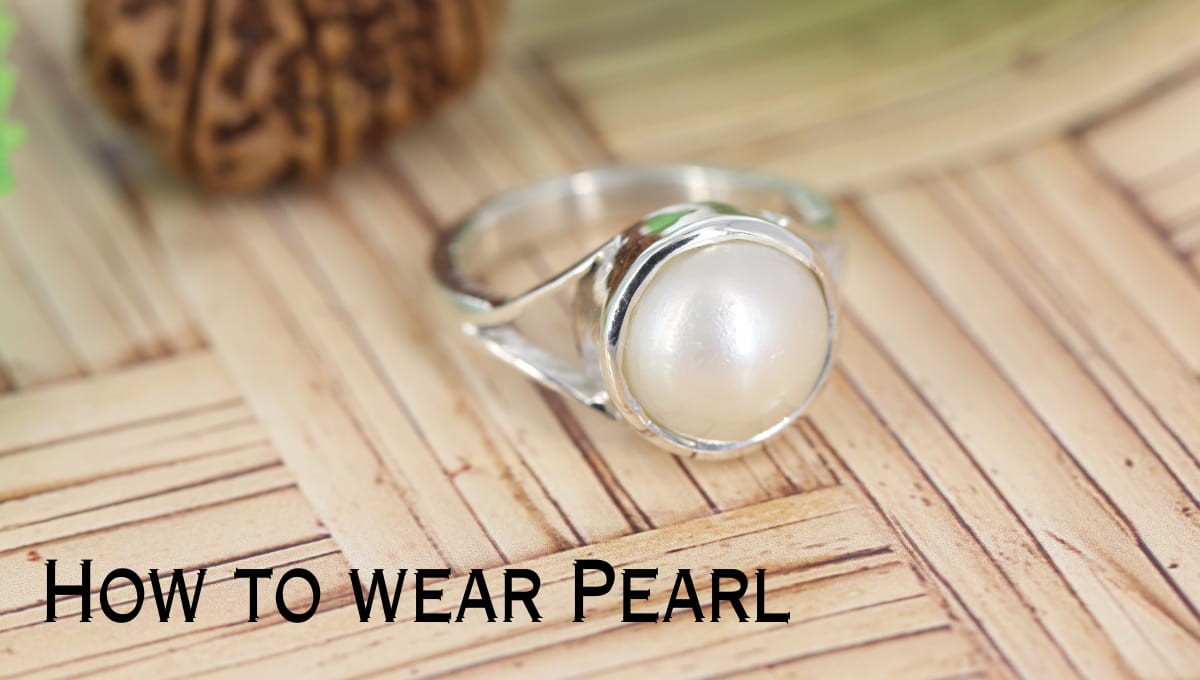When it comes to exuding glitter, allure, and drool-worthy charm, there are a few very gemstones that can match the qualities of pearl stone. Widely acknowledged as Moti stone in India, pearl gemstone is revered and hailed for its rarity, outrageous value, and implications in various industry verticals.
Original pearl stone is also hailed for its mammoth astrological benefits. Embracing a natural and par-excellent pearl stone is widely believed to bring immense mental peace and serenity in your life. Moreover, pearl gem is also supposed to suppress the Malefic effects of the Moon and deliver umpteen benefits to a wearer if Moon is residing at beneficial positions in one’s horoscope. The noteworthy question arises here is how to wear pearl stone in a proper and effective manner so that a wearer can elicit maximum benefits out of it.
In this engaging and comprehensive blog post, we bring you all the crucial pointers you must adhere to strictly if you don’t know how to wear pearl gemstones. Let’s get started!
Peek Here:- Who Can Wear Ruby Gemstone
How To Wear Pearl Gemstone
According to Vedic astrology, if a wearer covets to extract immense benefits out of pearl gemstone, he/she should wear it properly by following all the rituals and standard practices. This section encapsulates the vital pointers that one must follow stringently to purify and energize pearl stone and wear it properly to nullify all problems in life and derive heaps of benefits.
Below, we have created a list of pivotal pointers considering astrological references that must be satiated before wearing a pearl stone. We have also mentioned ingredients needed to purify and energize a pearl stone.
- Ganga Jal
- Tulsi Leaf
- Cow Milk
- Ghee
- Honey
- A clean bowl
You have to purify a pearl stone or its jewelry by using all ingredients one at a time along with chanting a Mantra “Om Sumaye Namah” at least 108 times or in the multiple of 108.
The best day to wear a pearl stone is Monday morning of Shukla Paksha. The best time to wear this scintillating gemstone is before sunrise.
A pearl stone can be worn on the little finger of the right hand or a working hand. Moreover, the exemplary metal to wear a pearl gemstone is silver.
A pearl stone can be worn either in a ring, a pendant, or a bracelet. However, most prominent astrologers strictly recommend wearing it as a ring as a stone touches the skin well and deliver benefits expeditiously.
Check More : – How to Wear Panna
Characteristics of a Good Pearl
A natural pearl stone, also known as an original or cultured pearl, possesses numerous coveted characteristics that determine its quality and overall value. Here are the key characteristics of a good pearl stone that you must consider while roping it.
Luster: In gemstone terminology, a luster refers to the brilliance, shine, and reflective quality of a pearl’s gemstone surface. A natural and top-quality pearl will have a high luster, exhibiting a bright and reflective glow. The luster indicates the quality of the nacre, which is the substance secreted by the mollusk that forms the pearl.
Surface Quality: The surface of a pearl should ideally be smooth and free from blemishes or imperfections. While minor irregularities are common and may not significantly impact the pearl’s beauty, excessive blemishes, spots, cracks, or pits can diminish its value to a great extent.
Shape: Pearls come in numerous shapes, including round, near-round, oval, button, drop, baroque, and more. Among these, perfectly round pearls are considered the most desirable and valuable. However, well-defined symmetrical shapes, such as near-round or oval, can also be highly sought after.
Size: The size of a pearl is measured in millimeters and typically influences its value. Generally, larger pearls are rarer and more valuable. However, other factors like luster and surface quality also play a crucial role in determining a pearl’s worth. It’s important to note that the size of a pearl can vary significantly depending on the type and species of the mollusk that produced it.
Color: Pearls can be found in a range of colors, including white, cream, silver, pink, black, and even more exotic shades like blue, green, and purple. The color of a good pearl should be even, consistent, and pleasing to the eye. Certain colors, such as pink and silver, are highly coveted, while others may be more common.
Nacre Thickness: The thickness of the nacre layer that forms the pearl is a significant factor in its quality. Pearls with a thick nacre layer are generally considered more durable, long-lasting, and valuable. Thinner nacre layers may be more prone to damage or fading over time.
Origin: The origin or source of the pearl can also affect its desirability and value. Pearls from certain regions, such as the South Sea, Tahiti, or Japan, are renowned for their quality and are often highly sought after. The origin may also impact factors like color and size.
It’s quite important to note that different types of pearls, such as freshwater, Akoya, South Sea, or Tahitian pearls, have varying characteristics and value factors. Therefore, understanding the specific attributes associated with each pearl type is essential when evaluating their quality.
Read More: – How to Wear Yellow Sapphire

